
Get a colonoscopy
For most people, your 50th birthday is the signal that it’s time for a first colonoscopy screening—and you should know the best time to schedule your colonoscopy. During the procedure, your doctor will use a long, lighted tube called a colonoscope to examine your colon for polyps, which can be early signs of colon cancer. The procedure, which is done while you’re under sedation, is painless and the benefits are great. Discovered early, colon cancer is one of the most preventable and treatable forms of cancer—but it rarely has symptoms until it’s progressed to a deadlier stage. “It is a disease that is 90 percent beatable if caught early,” says Michael Sapienza, CEO of Colon Cancer Alliance. “If you are not doing it for yourself, do it for others—your family,” says Sapienza. While most adults have a first colonoscopy at age 50, those with risk factors such as a family history of colon cancer, may need to be screened at an earlier age.
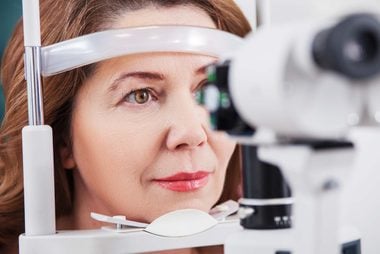
Visit the eye doctor
“Needing reading glasses is the most annoying sign that says ‘yes you really are aging,'” says Ruth D. Williams, clinical spokesperson for the American Academy of Ophthalmology. “It’s the first irreversible sign of aging, while others—like weight gain—you can go to the gym to get rid of.” Age-related eye care starts with a baseline eye exam, usually done at age 40, and serves as an important first step because many signs of eye disease are subtle. “Glaucoma is one disease that can develop before the patient realizes it,” says Williams. Other diseases that crop up with age include early cataracts, decreased vision, trouble seeing when driving at night, eye pain, redness, and flashes and floaters in the eye. These are all signs that should prompt a visit to the eye doctor. “A sudden appearance of flashes and floaters can indicate retinal detachment, while trouble with driving at night can be an early indication of cataracts,” says Williams.
When it comes to caring for your eyes, the advice is similar to caring for the rest of our health—stop smoking, avoid second-hand smoke, and wear sunglasses that offer 100 percent protection from UV rays. “The bigger the sunglasses, the better,” says Williams. “Protection from the sun helps prevent macular degeneration and cataracts, and wearing big sunglasses also protects the fine skin around the eyes, reducing your chance of getting wrinkles.” Eating colorful fruits and vegetables is also a must for eye health. “Research has shown that eating leafy greens slows the development of glaucoma and decreases the risk of macular degeneration,” says Williams. “I believe the data so much that I put leafy greens in everything I eat.” Check out these foods that can help protect your eyesight.
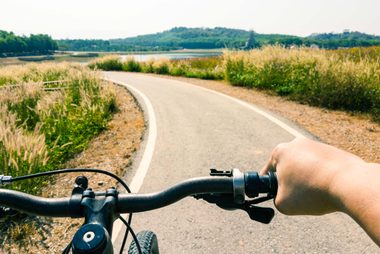
Start—or keep on—exercising
Regular exercise has many proven benefits and can help prevent, delay, or manage many of the most common chronic diseases (heart disease, diabetes, osteoporosis, and obesity) that affect adults 50 and older. It’s never too late! Loredana Moretti dropped 45 pounds six months after her 40th birthday. Now she’s 51 and in the best shape of her life. To get on track with exercise, Barbara Bushman, PhD, and author of American College of Medicine’s Complete Guide to Fitness & Health, suggests you find a physical activity that you enjoy and make a commitment to doing it on a regular basis. “Our 50s are stressful—the kids are growing up and we often have to care for aging parents,” says Bushman. “You need to make time and create the mindset for exercise.” Whatever activity you choose, if you want to reap the health benefits of exercise, you’ll need to do the equivalent of at least 150 minutes of moderate intensity aerobic physical activity (two hours and 30 minutes) each week. And how you workout matters, too. Here’s how to find out the best workout for your age.
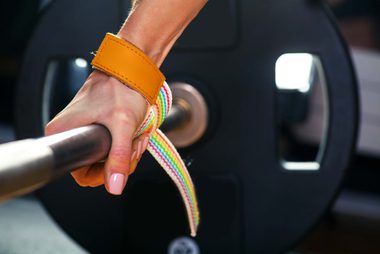
Add strength training
Muscle mass and strength decreases as we age, a phenomenon called sarcopenia. To combat it, you need to lift some heavy stuff, regularly. According to a Tufts University study, research shows that strength-training exercises have the ability to fight weakness and frailty and their debilitating consequences. “You may like to walk, and that’s great, but if you want to be active in your retirement years, you need strength training,” says Bushman. Doing strength-training exercises two to three days a week builds muscle strength and muscle mass. Lifting weights also puts stress on your bones, helping to preserve bone density, which will have thinned by 10 percent by the time you turn 50. Strength training can reduce the risk of osteoporosis and the signs and symptoms of chronic diseases such as heart disease, arthritis, and type 2 diabetes. Lifting weights also can help improve sleep and reduce depression. Bushman says that adding strength training in your fifties will help you stay strong and independent as you age. “When you are ready to retire, will you have the strength to go windsurfing or unload your kayak from your car?” Plus, women are at an even greater risk for osteoporosis than men, and should focus on a strength training program specific to women.
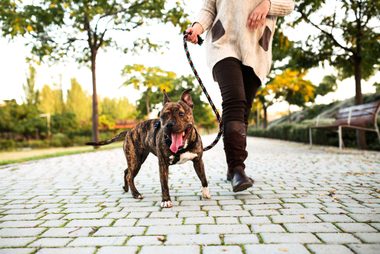
Make exercise part of your retirement plan
Many of us sit down with a financial planner to ensure we’ll have enough money when we retire, but when it comes to our health we often neglect planning ahead. “Once you get to middle-age you are more prone to see the consequences of inactivity,” says Wojtek J. Chodzko-Zajko, dean of the Graduate College at the University of Illinois at Urbana-Champaign and spokesperson for the American College of Sports Medicine. “Decades of being sedentary and poor nutrition will manifest as cardiovascular disease, hypertension, and diabetes, but it’s never too late,” he says. The first step is to add physical activity, but it has to be done in a way that creates balance in your life. “Being physically active decreases the rate of physiological decline as we grow older, but you can’t prescribe physical activity like a drug, you have to find ways to build physical activity into your life, make healthier nutritional choices, and manage the areas in your life that cause stress.” While Chodzko-Zajko says that there are many cognitive programs that promise to help with memory and improve brain function as we age, the best approach is to stay socially engaged, identify hobbies that give you pleasure, and to find physical activity that works for you. It might be walking the dog, going for an after dinner stroll, or going out dancing twice a week. “You have to think ahead and ask yourself ‘what is it that I want to do now, what do I want to do 10 years from now, and how do I get there?'” Thinking of hiring a personal trainer to help you get to where you want to be? Be sure to ask the right questions before you sign up.

Nap away stress
Exercise can protect the hippocampus, the part of the brain that’s responsible for the processing of long-term memory and emotional responses. Stress attacks and damages the anatomy of the cells of the hippocampus, explains Wendy Suzuki, professor of Neural Science and Psychology in the Center for Neural Science at New York University and author of Happy Brain, Happy Life. “Exercise is one part of the prescription for aging, but it is not everything,” she says. She recommends meditation to combat stress and increase attention along with getting enough sleep and taking naps. Decreased stress isn’t the only perk of napping. In fact, there are as many as 19 reasons you should nap regularly.

Take care of your skin
Wrinkles, age spots, dry skin, and loss of elasticity are all changes that you can expect to happen to your skin as you enter your 50s, especially if you have not been good about applying sunblock over the years. “When you enter your fifties, you have to worry about loss of collagen and dryness,” says Rebecca Baxt, MD, board certified dermatologist at Baxt CosMedical in Paramus, New Jersey. So what can you do now to combat these changes? The solution starts with a trip to the dermatologist for regular skin cancer screening and the development of a good skincare program. The risk of skin cancers (basal and squamous cell) increases as people get older as they have been exposed to the sun for a longer period of time. “Be diligent about applying sunblock, wear a hat, and stay hydrated,” says Baxt. You should also check your skin regularly at home. Don’t miss our guide to skin cancer warning signs (with images).
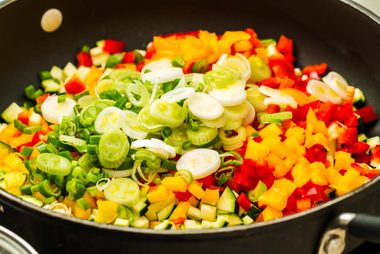
Be heart healthy and heart-attack aware
The impact of aging on your heart is not as obvious as wrinkles and gray hair, but taking care of your heart in your 50s requires just as much maintenance. The risk of heart disease increases as we age, especially among women: Heart disease is their number one killer; their risk of heart disease rises during menopause. The good news is that you can dramatically reduce your risk with lifestyle changes. “If you haven’t been exercising, you need to start,” says Nieca Goldberg, MD, cardiologist at NYU Langone Mediacal Center. “After menopause, you become more insulin resistant so you need to transition away from carbs and sugar.” She suggests following the Mediterranean diet, which emphasizes fruits and vegetables, fiber-rich whole grains, oily fish such as salmon, and nuts, legumes, and healthy oils such as olive oil. (Get started with our 7-day Mediterranean meal plan.) Being aware of the symptoms of heart attack and stroke is also important, and could save your life. Not everyone will experience severe chest pain when having a heart attack, or sudden numbness if they are having a stroke. Women should be aware that heart attack symptoms for women are different from those experienced by men. “In women the tightness associated with a heart attack can occur anywhere—right or left or lower down, which can be mistaken for a stomachache,” says Dr. Goldberg.

Stay sharp
Mental exercise—everything from learning a new language or skill to taking on activities that are mentally stimulating—has been shown to strengthen brain cell networks and help preserve mental functions, according to Successful Aging and Your Brain. The book compares the aging brain to a fine wine; as we age, the skills we acquired in our youth and practiced over the years may be at their finest—whether it’s analytical like tracking the stock market or procedural, such as playing a musical instrument. Certain daily tasks can also give your brain health a boost.
While our ability to access memories may slow down, good old physical activity can help with that as well: It has been found to improve memory function, according to a study in the Bristish Journal of Sports Medicine. “This is a good reason to start exercising in your fifties, even if you have never done it before,” says Suzuki. “While exercise won’t cure Alzheimer’s or dementia, just one single bout can help focus your attention.”

Get serious about your diet
Once you hit your 50s it’s time to come to terms with the fact that you can no longer eat the same way you did in your 20s and 30s. “Many people try to eat like they did when they were younger, but their activity levels have declined,” says Angel Planells, RDN and spokesperson for the Academy of Nutrition and Dietetics. “They gain weight, they bend over and realize they have a tire around their mid-section, or they go to the doctor and learn they have high cholesterol.” To get back on track nutritionally and help lose weight, Planells suggests making an appointment with a registered dietitian. “You need to make sure you are not coming up short in fiber intake and that you are getting enough protein to fuel your muscles.” Along with fiber, some key nutrients for the 50-and-over set include vitamin D, calcium, vitamin B-12, omega-3 fatty acids, and potassium.”Potassium decreases blood pressure and risk of stroke—look for it in bananas, potatoes, oranges, and dairy.” It’s also important to ensure you stay hydrated, but get rid of the sugary drinks and save the calories for for food, says Planells. Snacking can also help ward off hunger but you need to trade the chips, cake, and cookies for fruit, vegetables, and nuts. Other suggestions that can help control weight gain include splitting portions when dining out. “When you eat out you are usually served two to three portions of food,” says Planells. Next, improve your skin with a custom skincare routine for women in their 50s.
